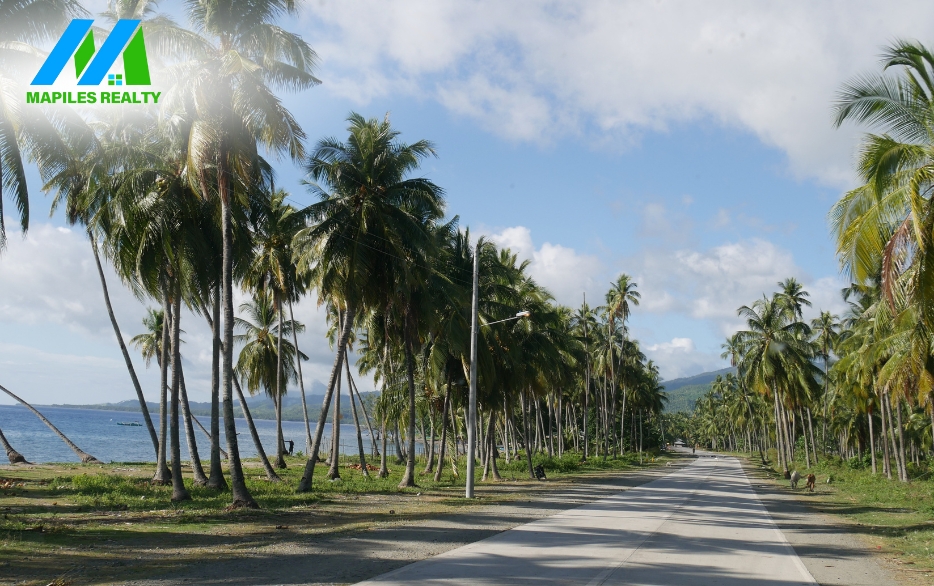Coconut Capital of the Philippines
Economic Strengths
- Coconut and copra production
- Agriculture (rice, bananas, cocoa)
- Tourism (beaches, Mount Hamiguitan)
- Fishing and aquaculture
Demographic Advantages
- Young population (34.53% aged 14 and below)
- Growing workforce (60.51% aged 15-64)
- Median age: 23
Key Attractions
- Mati City (capital)
- Mount Hamiguitan Wildlife Sanctuary (UNESCO World Heritage)
- Pusan Point (easternmost location)
- Davao Gulf (beaches, diving)
Opportunities
- Agricultural modernization
- Eco-tourism development
- Infrastructure upgrades (ports, roads)
- Coconut industry expansion
Challenges
- Remote terrain
- Poverty reduction
- Environmental conservation
- Disaster resilience
Why Invest in Davao Oriental?
Davao Oriental offers:
- Strategic location (Davao Region)
- Rich natural resources
- Skilled workforce
- Government support
- Growing infrastructure
| Name | City/ Municipality | Population (2020) | Population (2015) | Annual Population Growth Rate (2015‑2020) | Area (km2) | Density (2020), per km2 | Brgy count |
|---|---|---|---|---|---|---|---|
| Baganga | municipality | 58,714 | 56,241 | 0.91% | 945.50 | 62 | 18 |
| Banaybanay | municipality | 44,451 | 41,117 | 1.66% | 408.52 | 109 | 14 |
| Boston | municipality | 14,618 | 13,535 | 1.63% | 357.03 | 41 | 8 |
| Caraga | municipality | 39,704 | 40,379 | -0.35% | 642.70 | 62 | 17 |
| Cateel | municipality | 44,207 | 40,704 | 1.75% | 545.56 | 81 | 16 |
| Governor Generoso | municipality | 59,891 | 55,109 | 1.77% | 365.75 | 164 | 20 |
| Lupon | municipality | 66,979 | 65,785 | 0.38% | 886.39 | 76 | 21 |
| Manay | municipality | 39,572 | 42,690 | -1.58% | 418.36 | 95 | 17 |
| Mati | city (CC), capital | 147,547 | 141,141 | 0.94% | 588.63 | 251 | 26 |
| San Isidro | municipality | 33,664 | 36,032 | -1.42% | 220.44 | 153 | 16 |
| Tarragona | municipality | 26,996 | 26,225 | 0.61% | 300.76 | 90 | 10 |
| Davao Oriental Total | 576,343 | 558,958 | 0.65% | 5,679.64 | 101 | 183 | |
Economy
| Fiscal Year | Annual Regular Income | Change |
|---|---|---|
| 2009 | 696,536,068.47 | – |
| 2010 | 742,055,587.56 | 6.54% |
| 2011 | 816,113,240.04 | 9.98% |
| 2012 | 840,789,058.38 | 3.02% |
| 2013 | 849,633,860.16 | 1.05% |
| 2014 | 1,022,954,116.37 | 20.40% |
| 2015 | 1,227,611,538.07 | 20.01% |
| 2016 | 1,288,003,199.33 | 4.92% |
| End notes:Annual Regular Income = Locally Sourced Revenue + Internal Revenue Allotment (IRA) Current Year + Other Shares from National Tax CollectionLocally Sourced Revenue = Real Property Tax (General Fund) + Tax on Business + Other Taxes + Regulatory Fees + Service/User Charges + Receipts from Economic Enterprises | ||
Davao Oriental envisions a future where its coastal youth are equipped with knowledge and skills to thrive. Educators and institutions diligently cultivate a culture of learning, innovation, and growth, inspired by the province’s coastal wonders.
Tourism
Davao Oriental, often hailed as “Nature’s Playground,” promises enchanting ecotourism adventures for nature enthusiasts. Its biodiverse rainforests, pristine beaches, and vibrant cultural festivals offer unique attractions for travelers seeking an enchanted connection with nature.
Visitors to Davao Oriental can explore its enchanting forests, savor local delicacies, and immerse themselves in cultural festivities. The province’s potential as an ecotourism destination is an exciting discovery for those looking to experience the enchantment of nature.





